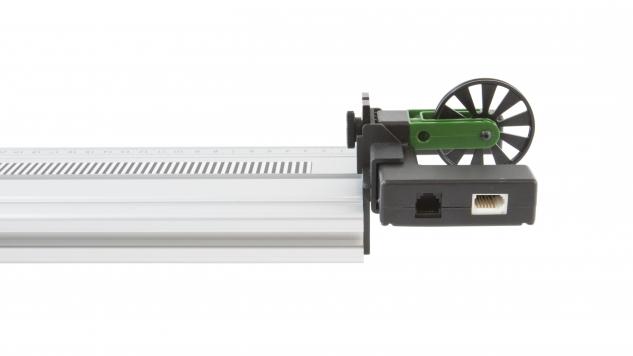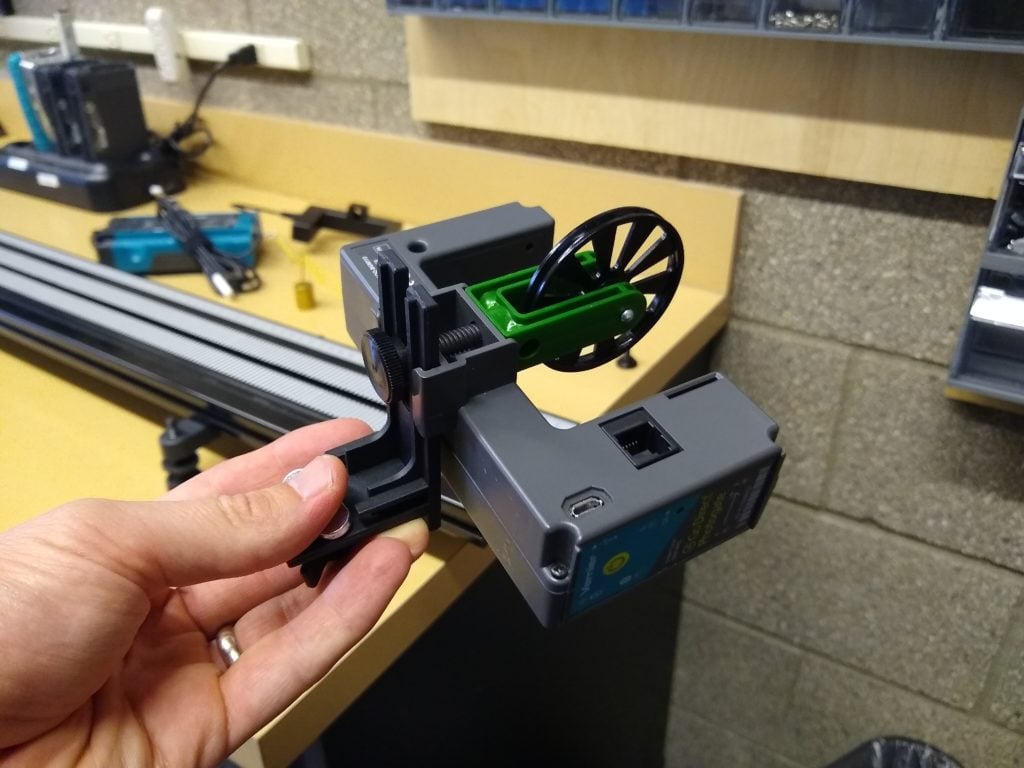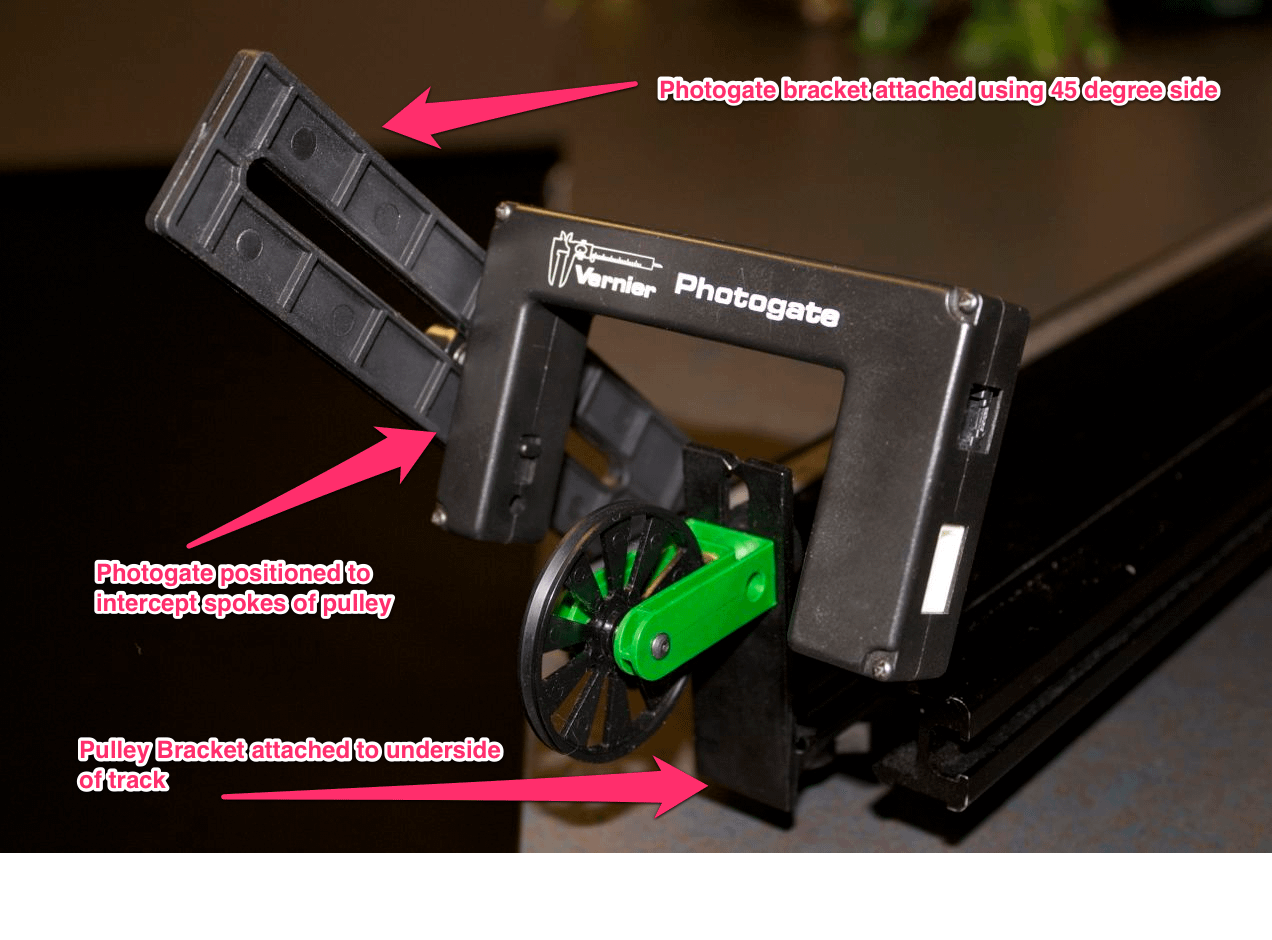A half-Atwood machine, with a cart, string, pulley, and hanging mass, is a common Newton’s Second Law and kinematics lab. If you have a pulley and photogate in this setup, you can easily collect position, velocity, and acceleration data.
Starting in 2016, the Pulley Bracket (

The following video demonstrates how to attach the Pulley Bracket, Photogate, and Ultra Pulley to the track.
Some details to note:
- The Pulley Bracket comes with two thumb screws. When attaching both a photogate and the Ultra Pulley use the longer thumb screw. If you are only attaching the Ultra Pulley, use the shorter thumb screw.
- The Pulley Bracket slot allows you to adjust the height of the Ultra Pulley above the top surface of the track. If you are using the photogate/pulley in a half-Atwood setup, lower the Ultra Pulley to a position where the string – connected to the cart on one end and a hanging mass on the other – is parallel to the track; in that position, the force exerted by the string is horizontal, i.e. does not have a vertical component.
If you have a Go Direct® Photogate (

Prior to the 2016 update to the Pulley Bracket, students used the Photogate Bracket (
It is this 45-degree position that allows you to easily support a photogate so that it can read the motion of a pulley.
This image shows how to configure the bracket.

